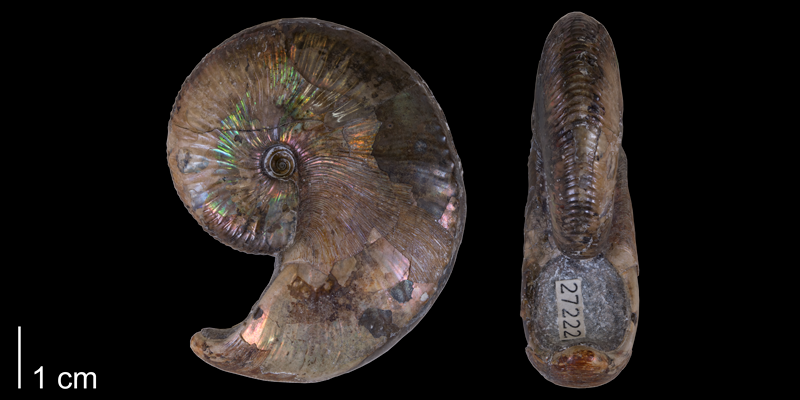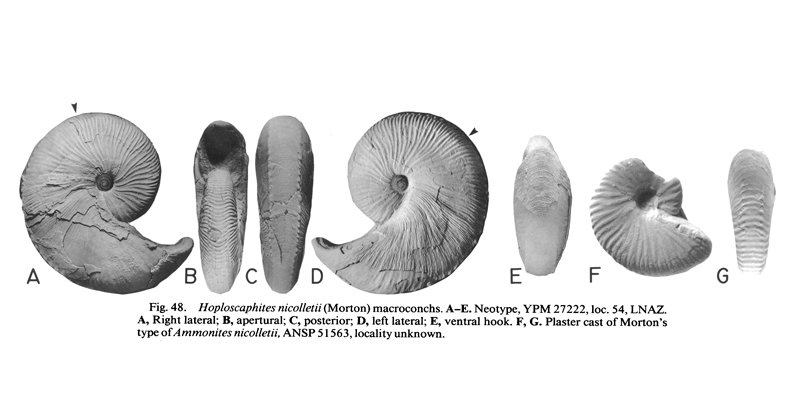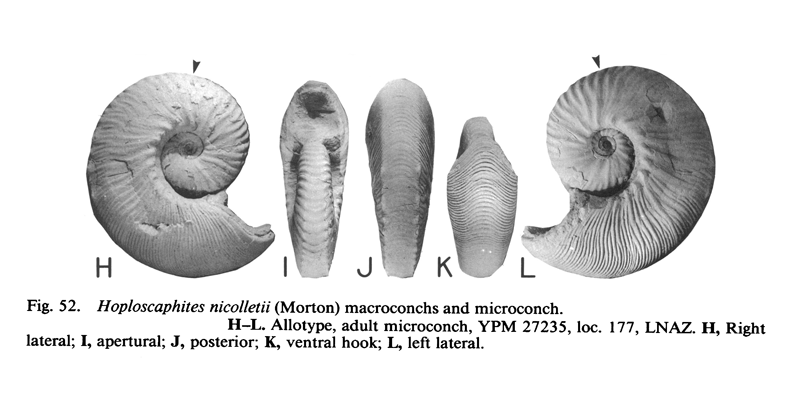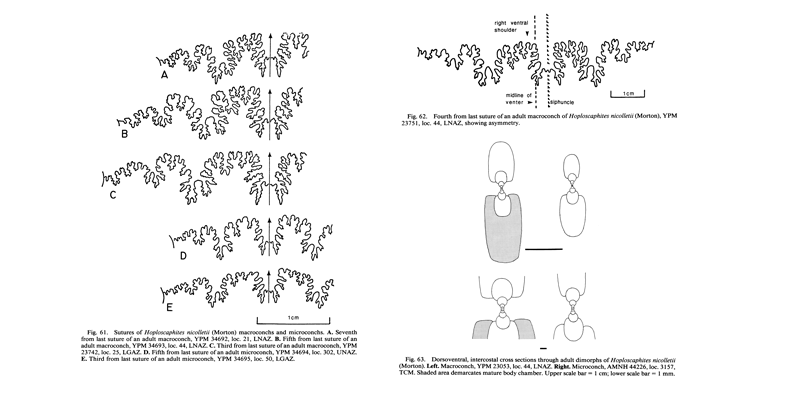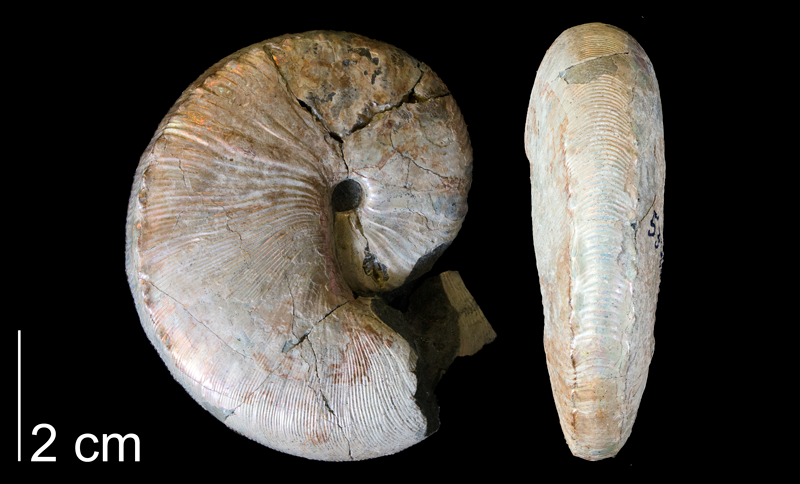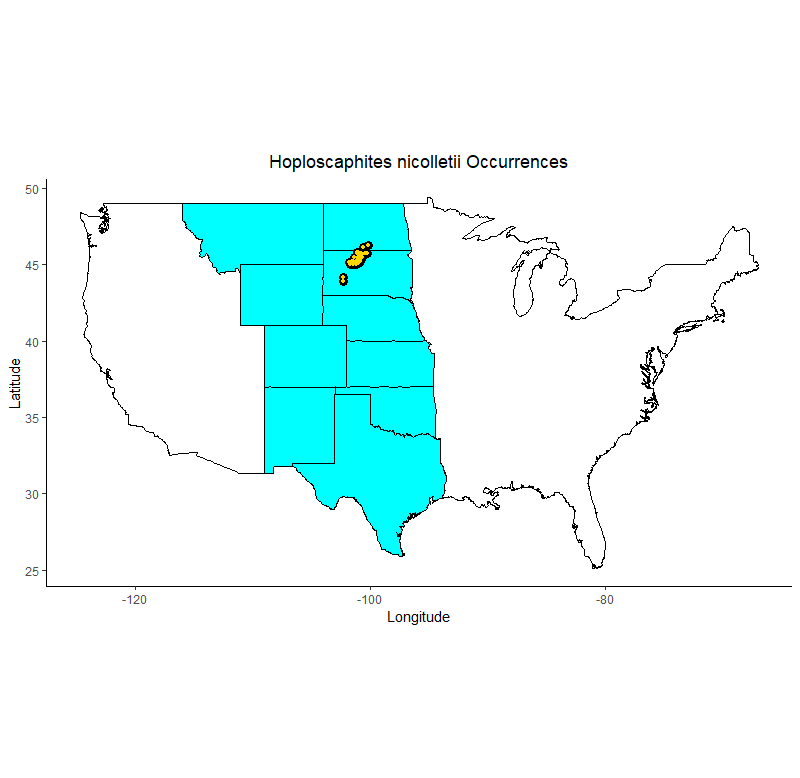
Hoploscaphites nicolletii
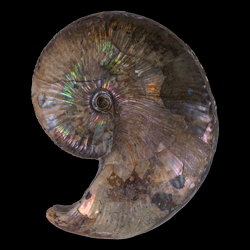
- Phylum: Mollusca
- Class: Cephalopoda
- Order: Ammonoidea
- Family: Scaphitidae
- Genus: Hoploscaphites
- Species: Hoploscaphites nicolletii (Morton, 1842)
Geological Range
Hoploscaphites nicolletii Zone: Upper Maastrichtian
Paleogeographic Distribution
Wyoming to Montana
Remarks
3D Model of species created by Shellie Luallin:
Original presentation: Ammonites nicolletii
Original publication: Morton, S. G. 1842. Description of some new species of organic remains of the Cretaceous Group of the United States with a tabular view of the fossils hitherto discovered in this formation. Journal of the Academy of Natural Sciences of Philadelphia 8(2): 207-227. [p. 209, pl. 10, fig. 3].
Neotype: YPM 27222 (plaster cast of Morton’s type is ANSP 51563).
Type locality: unknown (see Landman and Waage, 1993).
Zonation:Hoploscaphites nicolletii zone (Cobban et al., 2006).
PaleoDB taxon number: 145232.
Synonyms: ?Ammonites mandanensis Morton, 1842 (source: Landman and Waage, 1993); ?Ammonites abyssinus Morton, 1842 (source: Landman and Waage, 1993).
References: Landman and Waage (1993).
Origin of name: named for Joseph Nicolas Nicollet, “who explored and mapped the upper Mississippi River Valley and collected Cretaceous fossils in South Dakota in 1839” (Cobban et al., 2006, p. 33).
Original description: A. Nicolletii. PI. 10, fig. 3.—Shell convex, rapidly enlarging towards the mouth, with at least two volutions, one received deeply into the other ; costae delicate, gently curved, and bifurcate towards the convex dorsal periphery, which they cross in arched lines, between numerous minute tubercles.
I have much pleasure in dedicating this interesting species to my friend Mr. Nicollet, whose zeal and intelligence have contributed largely to the development of American science.
Some years since I saw several specimens of Ammonites which were obtained by Judge Bry, in the township of Wachita, in Louisiana. I have elsewhere (Synop. p. 24,) considered them as indications of cretaceous deposits; and my recollection induces me to believe that their characters correspond either to A. abyssinus or A. Nicolktii.
To access this description in its original formatting through the Biodiversity Heritage Library, click here.
Stratigraphic Occurrences
- Maastrichtian
- Fox Hills Formation (ND)
- Fox Hills Formation (SD)
- Fox Hills Formation (Trail City Member) (ND)
- Fox Hills Formation (Timber Lake Member) (SD)
- Fox Hills Formation (Trail City Member) (SD)
- Pierre Shale (WY)
- Unknown Stage
- Pierre Shale (SD)
